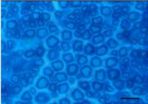(Press-News.org) Although the nation is spending more on welfare than ever before, most of that money is going to better-off families rather than the very poorest, a researcher found.
Robert A. Moffitt, the Krieger-Eisenhower Professor of Economics at the Johns Hopkins University, found that the United States has become more generous over time in supporting low-income families, spending 74 percent more in inflation-adjusted dollars on welfare programs in 2007 than in 1975. But for the 2.5 million single parent families with the absolute lowest levels of earnings, aid dropped 35 percent between 1983 and 2004. During that same period, aid rose 74 percent for those earning slightly more.
"You would think that the government would offer the most support to those who have the lowest incomes and provide less help to those with higher incomes," Moffitt said. "But that is not the case."
Moffitt, who is president of the Population Association of America, presented his findings May 2 at the organization's annual meeting in a keynote address titled The Deserving Poor, the Family, and the U.S. Welfare System. The report is slated for winter 2015 publication in the journal Demography.
Moffitt researched the 15 largest social safety net programs over the past 30 years and found spending to assist the poor had dramatically increased, especially since the mid-1980s. He also examined who was getting that money and discovered three major trends.
First, there was the marked shift away from those earning the least money, as little as 50 percent of the federal poverty line, to those with incomes as much as 200 percent above the poverty line. That means in 2014, a family of four earning $11,925 a year likely got less aid than a same-sized family earning $47,700.
Next, he found more assistance going to the elderly and the disabled and less to the non-aged and non-disabled.
And finally he tracked a spending shift to married parent families, away from single parent families.
Though welfare spending was up overall, Moffitt found the programs with the most growth tended to assist only specialized populations. These included the Supplemental Security Income program (which only helps people who are elderly, blind and disabled), the Earned Income Tax Credit program (which offers tax credits only to working people and mainly to families earning $10,000 to $20,000) and the Child Tax Credit (which only helps those with significant taxable income).
The Supplemental Nutrition Assistance program, or food stamps, which also expanded greatly, does help a broad range of recipients but provides only about $5 per day per person.
Overall, Moffitt discovered a distinct trend of welfare benefits going to those who are regarding as "deserving" of support. More directly put, the government and voters prefer that aid go to those who work, who are married and who have kids, Moffitt said.
Single parent families with no disabled members and all members younger than 62 received, when adjusted for inflation, 20 percent less from the government in 2004 than in 1983. Of those families, those with incomes 50 percent below the poverty line took the biggest hit with an aid drop of 35 percent. Those with incomes above 50 percent of the poverty line actually saw an increase of 73 percent.
"We see a pattern — rising support for those who work and declining support for those who do not," Moffitt said. "The decline of support to families with non-employed members and to single parents seems to be rooted in the presumption that they have not taken personal responsibility for their own situation."
While Moffitt agreed that work should be rewarded and that those who are capable of working should be required to do so, he recommended that those who are making an effort but are not able to find good-paying jobs receive more support than they are currently receiving.
Earlier Moffitt research, published in The Annals of the American Academy of Political and Social Science, showed how U.S. aid programs expanded to help Americans during the Great Recession. More on that report here: http://releases.jhu.edu/2013/11/19/aid-programs-helped-u-s-survive-the-great-recession/.
INFORMATION:
For a copy of the address or to speak with Moffitt, contact Jill Rosen at jrosen@jhu.edu or 443-997-9906.
US welfare spending up, but help for the neediest down
2014-05-06
ELSE PRESS RELEASES FROM THIS DATE:
Scientists convert stem cells to eye tissue
2014-05-06
Orlando, Fla. — In two separate studies, scientists have developed methods to convert non-embryonic stem cells into eye cells that could be used to restore sight. The research is being presented at the 2014 Annual Meeting of the Association for Research in Vision and Ophthalmology (ARVO) this week in Orlando.
In the first method, researchers converted cells taken from the front of a patient's eye into stem cells, which were then programmed to become nerve cells found in the back of the eye. The second study involved introducing stem cells to a single growth factor, which ...
New gel-based eye fluid aids post-operative healing
2014-05-06
Orlando, Fla. — In an effort to avoid serious side effects suffered after surgery to repair retinal detachment, vision scientists have developed a new product to help stabilize the eye while it heals. The research is being presented at the 2014 Annual Meeting of the Association for Research in Vision and Ophthalmology (ARVO) this week in Orlando, Fla.
In a recent study, Healaflow® a gel based on one of the most common compounds found in the liquid that fills the eye, was tested in rabbit eyes. After surgery to repair retinal detachment in the rabbits, Healaflow® did ...
First reversible glue bandage could save injured soldiers' vision
2014-05-06
Orlando, Fla. — Scientists have developed the first reversible glue that could be used on the battlefield to treat eye injuries, potentially saving soldiers' vision. The research is being presented at the 2014 Annual Meeting of the Association for Research in Vision and Ophthalmology (ARVO) this week in Orlando, Fla.
When applied to a wounded eye, the adhesive warms up and becomes sticky, sealing the wound and minimizing further damage while the soldier is transported for treatment. Upon arriving at a hospital, doctors can simply apply cool saline solution to the glue, ...
WHI reports $37.1B economic return on combined hormone therapy clinical trial
2014-05-06
SEATTLE – Economic findings were released today on the Women's Health Initiative (WHI), estrogen plus progestin (E+P) trial. The WHI is one of the largest National Institutes of Health-funded studies ever conducted on women. Housed at the Fred Hutchinson Cancer Research Center in Seattle, it is a 15-year, multimillion-dollar study established in 1991, involving more than 160,000 women nationwide, including some 3,500 in Washington.
The overall economic return from the WHI E+P trial indicates that changes in practice stemming from the trial provided a net economic return ...
Novel antioxidant makes old arteries seem young again, CU-Boulder study finds
2014-05-06
An antioxidant that targets specific cell structures—mitochondria—may be able to reverse some of the negative effects of aging on arteries, reducing the risk of heart disease, according to a new study by the University of Colorado Boulder.
When the research team gave old mice—the equivalent of 70- to 80-year-old humans—water containing an antioxidant known as MitoQ for four weeks, their arteries functioned as well as the arteries of mice with an equivalent human age of just 25 to 35 years.
The researchers believe that MitoQ affects the endothelium, a thin layer of cells ...
Cataract surgery decreases risk of falls in older patients
2014-05-06
Orlando, Fla. — New research finds that cataract surgery dramatically decreases the number of falls individuals suffer due to poor vision. The research is being presented at the 2014 Annual Meeting of the Association for Research in Vision and Ophthalmology (ARVO) this week in Orlando, Fla.
In a study of more than 400 Vietnamese patients who were 50-plus years old with cataracts in both eyes, the number of falls patients suffered before and after cataract surgery was monitored. Researchers found a 78% decrease in the risk of falls the year after patients had cataract ...
Simulated model of eye's 3D structure facilitates stem cells transplant
2014-05-06
Orlando, Fla. — Scientists have developed a model that mimics the complex structure of the cornea to enable the transplant of healthy corneal stem cells. The research is being presented at the 2014 Annual Meeting of the Association for Research in Vision and Ophthalmology (ARVO) this week in Orlando Fla.
Used to restore sight, corneal stem cells live in a specific physical environment. Transplanting these stem cells requires accurate mimicry of their natural surroundings during transport. In this work, vision scientists have recreated the 3D architecture where corneal ...
Astronomers harness the galaxy's biggest telescope
2014-05-06
An international team of astronomers has made a measurement of a distant neutron star that is one million times more precise than the previous world's best.
The researchers were able to use the interstellar medium, the 'empty' space between stars and galaxies that is made up of sparsely spread charged particles, as a giant lens to magnify and look closely at the radio wave emission from a small rotating neutron star.
This technique yielded the highest resolution measurement ever achieved, equivalent to being able to see the double-helix structure of our genes from the ...
A novel transgenic mouse model of Chinese Charcot-Marie-Tooth disease type 2L
2014-05-06
Dr. Ruxu Zhang and colleagues from Third Xiangya Hospital, Central South University in China previously found that the K141N mutation in heat shock protein B8 (HSPB8) was responsible for Charcot-Marie-Tooth disease type 2L in a large Chinese family. Therefore, they generated a transgenic mouse model bearing the K141N mutation in the human HSPB8 gene, and to determine whether this K141NHSPB8 transgenic mouse model would manifest the clinical phenotype of Charcot-Marie-Tooth disease type 2L, and consequently be suitable for use in studies of disease pathogenesis. The K141NHSPB8 ...
Regulatory effects of glial cells on retinal synaptic plasticity
2014-05-06
Different types of retinal damage could induce plastic changes of retinal synapses, which might precede the serious damage of neuron soma. These morphological and functional changes to synapses after retinal injury could explain why many intervention measures protected neurons from death but failed to fully recover the damaged visual function. Therefore, it is necessary to investigate both the protection of synapses as well as protecting neurons from death. Dr. Lihong Zhou and co-workers from Central South University in China suggested that retinal glial cell activation ...


